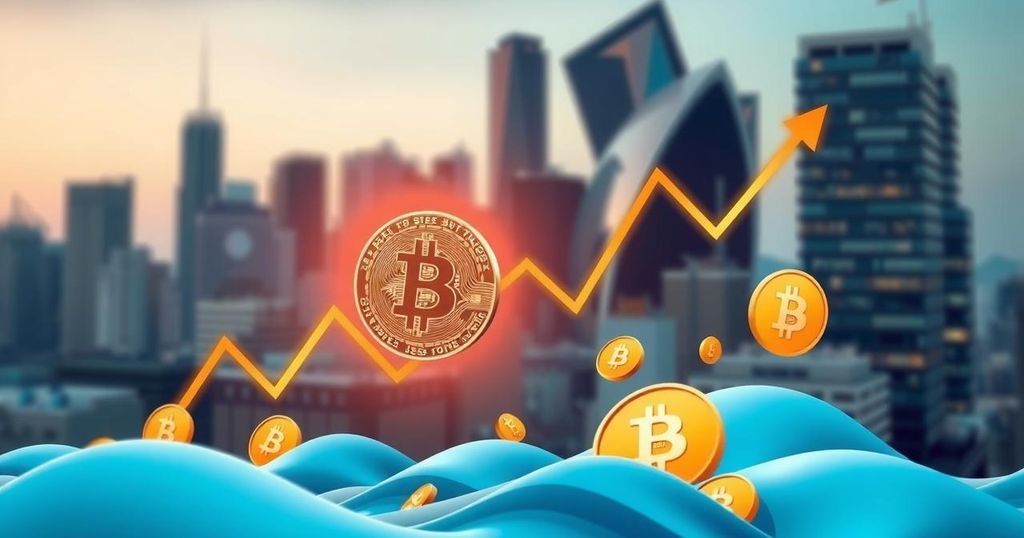Inflation Report Influences Bitcoin Market Dynamics and Valuation Trends
The January U.S. Consumer Price Index increased unexpectedly, resulting in a temporary decline in Bitcoin prices. Historically, Bitcoin has shown limited sensitivity to CPI changes, raising doubts about its viability as an inflation hedge. Perspectives on future price movements reveal potential stabilization as long-term holders may capitalize on recent lows, yet concerns linger regarding monetary policy’s impact on Bitcoin’s future.
The U.S. Consumer Price Index (CPI) exceeded expectations in January, increasing by 0.5% month-on-month instead of the anticipated 0.3%. This rise contributed to a decline in Bitcoin’s price, which fell to approximately $94,000 shortly after the report’s release, before partially recovering to around $95,500 by 11:15 a.m. ET. This situation has reignited discussions regarding Bitcoin’s effectiveness as an inflation hedge.
Historically, Bitcoin’s price has exhibited limited responsiveness to CPI reports. Research from CoinGecko indicates that Bitcoin often rises or falls independently of inflation trends. For example, even when CPI showed a decrease in inflation rates, Bitcoin experienced significant price fluctuations. This inconsistency suggests that the cryptocurrency might not serve as a reliable hedge against inflation, contrary to widespread expectations.
The inflation report also implies that the Federal Reserve may delay interest rate cuts longer than previously thought, potentially alarming investors. Chris Zaccarelli, Chief Investment Officer at Northlight Asset Management, emphasized the psychological impact of such news on the market, warning of possible overreaction in response to prolonged high rates: “Not only will this create tremendous psychological damage to investors, but the market will likely have a negative knee-jerk reaction.”
Experts like Alan Orwick, co-founder of Quai Network, believe the report’s potential for tighter monetary policy contributed to the Bitcoin sell-off. However, he expressed cautious optimism for recovery if liquidity improves or inflation decreases. This reaction reflects a contradiction to Bitcoin’s intended purpose as an inflation hedge. Other analysts noted Bitcoin’s increasing correlation with risk assets amidst diminishing prospects for imminent U.S. interest rate cuts.
Financial analyst Nic Puckrin remarked that while Bitcoin was originally conceived as an inflation hedge, its increasing institutional adoption links its performance closely with stock market trends. He projected that Bitcoin’s price may stabilize as long-term holders capitalize on the dip to acquire what they view as a valuable asset. Nevertheless, there are concerns, as Jim Flint highlighted, that a significant rise in Bitcoin’s price necessitates subsequent steps including Fed rate cuts and quantitative easing, both of which seem less likely in light of the recent CPI report.
The current inflation report has caused short-term volatility in Bitcoin’s market price, bringing into question its role as an effective inflation hedge. While experts have differing opinions on future trends, it is evident that Bitcoin’s relationship with traditional risk assets is growing stronger, thereby complicating its narrative as a traditional safe haven against inflation. Investors remain watchful for developments concerning Federal Reserve monetary policy, which could significantly influence Bitcoin’s trajectory.
Original Source: sherwood.news








Post Comment